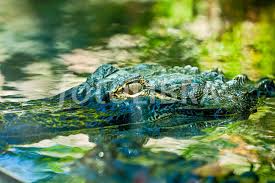Pond type and pre-tanning processes affects size and quality of captive Nile crocodile skins
Keywords:
Crocodylus niloticus; skin; quality; pond; processing; curingAbstract
The skin of Crocodylus niloticus is one of the best among alligator species. Understanding proper rearing of crocodiles and processing of their skins is very essential for farmers because quality is very crucial in marketing the skins. A study was done to assess the effects of processing stages and pond type on crocodile skin size and quality. A total of 400 skins were assessed, of which 200 skins were from each pond. The skins had their belly sizes measured before and after being subjected to the processing stages. The skins were also graded in terms of quality after every stage. Data analysed using a paired t-test for initial and final skin size within and across ponds showed that there was a significant (P =0.00) effect of pond type on both initial and final skin size. Earth ponds showed high skin size but had a low quality compared to cement ponds. Further, there was a significant effect of processing stages on final quality (P value =0.00). The conclusion of the study was that crocodile rearing environment and skin processing techniques influence final size and quality of skins. As such, it was recommended that producers monitor rearing conditions and pre-tanning processing stages in order to improve skin quality, minimise losses due to shrinkage and thus maximise profits.
References
Arbeid, R, 2006, History of Hides and Skins: Hides and Skins Production, Leather Guideline Book, International Trade Centre, UNCTAD/WTO, Arcapelli Publishers, USA.
Blake, D. K. & Loveridge, J. P. 1975. The role of commercial crocodile farming in crocodile conservation. Biological Conservation 8(4): 261-272.
Brach, W. R. 1988. South African Red Data Book-Reptiles & Amphibians. In Dzomba, B. M., Sejoe, S. & Segwagwe, B. V. E. (2008). Commercial Crocodile production in Bostwana. Tropical Animal Health & Production 40: 377-381
Caldwell, J, 2011, World Trade in Crocodilian Skins 2007-2009, United Nations Environment Programme, World Conservation and Monitoring Centre, Cambridge, United Kingdom.
Campbell, H. A., Dwyer, R. G., Wilson, H., Irwin, T. R. & Franklin, C. E. 2014. Predicting the probability of large carnivore occurrence: a strategy to promote crocodile and human coexistence. Animal Conservation 2014: 1-9
Dzomba, B. M., Sejoe, S. & Segwagwe, B. V. E. 2008. Commercial Crocodile production in Bostwana. Tropical Animal Health & Production 40: 377-381
Fergusson, R. A. (1992). A radiotelemetry and mark-recapture experiment to assess the survival of juvenile crocodiles released from farms into the wild in Zimbabwe. Pp 98-107. In Crocodile Proceedings of the 11th Working Meeting of the crocodile Specialist Group of the Species Survival Commission of the IUCN. The world Conservation Union, Gland Switzerland. Volume 1 ISBN 2-8317-0132-5.
Fergusson, R.A. 2010. Nile Crocodile Crocodylus niloticus. Pp. 84-89 in Crocodiles. Status Survey and Conservation Action Plan. Third Edition, ed. by S.C. Manolis and C. Stevenson. Crocodile Specialist Group: Darwin.
Guthrie-Strachan, J. J., 2005, The Investigation, Development and Characterisation of Novel Zirconium-Based Tanning Agents, Department of Chemistry, Rhodes University, South Africa.
Hutton, J. M. & Child, G. F. T. 1989. Crocodile Management in Zimbabwe. In Crocodiles, the ecology, management and conservation. A Special Publication for the Crocodile Specialist group of the IUCN. IUCN, Gland Switzerland.
Hutton, J., Ross, P. & Webb, G. 2002. Using the Market to Create Incentives for the Conservation of Crocodilians: A Review: In Proceedings of the 16th Working Meeting of the Crocodile specialist Group of the Species Survival Commission of IUCN – The World Conservation Union convened at Gainesville, Florida, 7 – 10 October 2002.
Hutton, J.M and Webb G.T.M 1990, An Introduction to the Farming of Crocodilians, Workshop IUCN/SSC, Gainsville, FA: Crocodile Specialists Group.
Morpurgo, B., Gvaryahu, G. & Robinzon, B. 1993. Aggressive behaviour in immature captive Nile crocodiles, Crocodylys niloticus, in relation to feeding. Physiology & Behaviour 53(6): 1157-1161.
Revol, B, 1994, Crocodile Farming and Conservation the Example of Zimbabwe, Biodiversity and Conservation, Harare, Zimbabwe.
Ross J.P. (ed.). 1998 Crocodiles. Status Survey and Conservation Action Plan. 2nd Edition. IUCN/SSC Crocodile Specialist Group. IUCN, Gland, Switzerland and Cambridge, UK. viii + 96 pp.
Shanawany, M. M. & Dingle, J. 1999. Ostrich production Systems. Food and Agricultural Organisation of the United Nations (FAO) Animal Production and health Paper 144. FAO, Rome, Italy.
Thorbjarnason, J, 1999, Crocodile Tears and Skins: International Trade, Economic Constraints and Limits to the Sustainable Use of Crocodilians, Journal of Conservation Biology; 13(3):465-470.
Van Jaarsveldt, K.R, 1982b, The Present Trade in Skins of Crocodylus niloticus Ranched and Reared in Zimbabwe, IUCN/SSC, Crocodile Specialists Group, Victoria Falls, Zimbabwe.

Published
How to Cite
Issue
Section
Copyright (c) 2015 Choice Nomazulu Botha Mpofu, Mlamuleli Mhlanga, Nhlanhla Moyo

This work is licensed under a Creative Commons Attribution-NonCommercial-NoDerivatives 4.0 International License.



